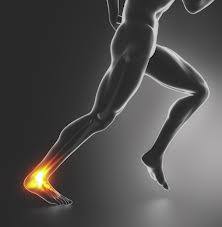New Treatment Protocols for Plantar Heel Pain
 Heel pain is one of the most common and disabling foot problems in Australia today. The most common cause of heel pain is plantar fasciitis, however a range of other differential diagnoses including nerve entrapments and more systemic causes such as sero-negative arthritides need to be considered. Recent research suggests plantar fasciitis is mostly degenerative in nature (and subsequently renamed plantar “fasciosis”). Most people will experience pain in this region at some stage in their life, with symptoms lasting between 6 to 18 months.
Heel pain is one of the most common and disabling foot problems in Australia today. The most common cause of heel pain is plantar fasciitis, however a range of other differential diagnoses including nerve entrapments and more systemic causes such as sero-negative arthritides need to be considered. Recent research suggests plantar fasciitis is mostly degenerative in nature (and subsequently renamed plantar “fasciosis”). Most people will experience pain in this region at some stage in their life, with symptoms lasting between 6 to 18 months.
Treatment protocols for plantar fasciitis or heel spur syndrome have evolved over the years, and focus on addressing the cause of the symptoms. A lot more is now known about the mechanical properties of the heel fat pad, specifically that energy loss within this tissue is reduced in symptomatic limbs, and is also correlated with the sonographic thickness of the plantar fascial enthesis. This suggests that viscosity, rather than elasticity of the heel fat pad may play an important role in the severity of heel pain, and provides a link between the mechanical behaviour of the plantar fat pad and plantar heel pain.
New research on the use of custom foot inserts (Orthotics) in the management of plantar fasciosis has allowed Podiatrists to improve healing times of this tissue. Use of specific wedging and “cut outs” on the orthoses in the shoes can help reduce the amount of force required to establish the Windlass Mechanism (tightening of the plantar fascia at the propulsive phase of gait) which offloads tissue stress and can improve rates of healing.
Other treatments include specific stretching and strengthening exercises, self massage, changing footwear, night splints/socks, physical therapy, acupuncture and shock wave therapy, which is now available locally at the NQ Foot and Ankle Centre. Shockwave therapy induces increased blood flow and metabolic activity around the site of pain, as well as fragmenting the calcific margins of the fascial insertion, to accelerate the healing process. The use of HcLA injections is an area of much conjecture in recent medical literature, but remains a valid treatment option for long standing cases (>18 months), preferably undertaken with ultrasound guidance.
Tony Pascoe
NQ Foot and Ankle Centre








